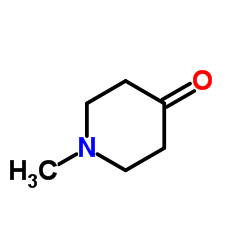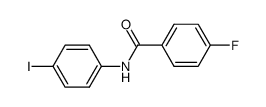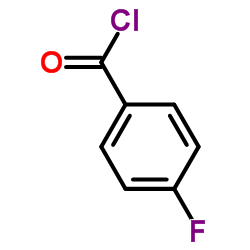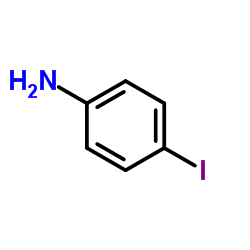182563-08-2
| Name | 4-fluoro-N-[3-(1-methylpiperidin-4-yl)-1H-indol-5-yl]benzamide |
|---|---|
| Synonyms |
LY 334370
LY334370 |
| Description | LY334370 is a selective 5-HT1F receptor agonist with a Ki of 1.6 nM. |
|---|---|
| Related Catalog | |
| Target |
Ki: 1.6 nM (5-HT1F) |
| In Vitro | LY334370 has no vasoconstrictor effects on human cerebral arteries in vitro until a dose of 10-5 M, at which it produces a contraction of 8.5±5.7%; however, this is not significant[1]. |
| In Vivo | Following intravenous administration of LY334370 at 3 mg/kg (n=3) or 10 mg/kg (n=6) electrical stimulation evokes an increase in dural blood vessel diameter of 135±6% and 106±11%, respectively, which is not significantly different from the respective control values. LY334370 has no effect on dural blood vessel diameter per se, since the actualdural blood vessel diameter is 43±4 arbitrary units before drug and 43±4 arbitrary units 15 min after injection of LY334370 (10 mg/kg)[1]. |
| Cell Assay | Human cerebral artery is used in this study. Segments are prepared as previously described, but briefly they are placed in a buffer solution containing (mM) NaCl 119, NaHCo3 15, KCl 4.6, CaCl2 1.5, NaH2PO4 1.2, MgCl2 1.2, and glucose 5.5. Sections of vessel about 0.5 mm in diameter and 1 to 2 mm in length are mounted in a temperature-controlled tissue bath (37°C) containing buffer solution bubbled with 95% O2 and 5% CO2. The vessel segments are given a tension of 4 mN and allowed to stabilize at this tension for 1 to 1.5 h. Vessel reactivity is tested by exposure to 60 mM KCl. This is done twice for each segment and only if the response is similar to the segment used for LY334370 testing. Responses to LY334370 is calculated as a percentage of the maximum KC1 response[1]. |
| Animal Admin | Male Sprague-Dawley rats (300 to 400 g) are anesthetized with pentobarbitone sodium. Briefly, a femoral artery and both femoral veins are cannulated for blood pressure recording, intravenous injection of drugs and infusion of anesthetic, respectively. Rats are placed in a stereotaxic frame, the skull exposed and thinned by drilling to reveal a branch of the middle meningeal artery whose diameter is measured continuously through the intact skull using intravital microscopy and a video dimension analyser. Neurogenic vasodilation is evoked using a bipolar stimulating electrode placed on the surface of the cranial window approximately 200 μM from the vessel of interest. A control vasodilation response to electrical stimulation is produced and 5 min later LY334370 (3 or 10 mg/kg, iv.) is given and the electrical stimulation repeated after a further 15 min. The mean maximum percentage increase in dural vessel diameter relative to pre-stimulus baseline is calculated for each response and comparisons of vasodilation responses evoked in the presence or absence of LY334370 are made by analysis of variance (ANOVA) followed by paired t-tests[1]. |
| References |
| Boiling Point | 504.1ºC at 760 mmHg |
|---|---|
| Molecular Formula | C21H22FN3O |
| Molecular Weight | 351.42 |
| Flash Point | 258.7ºC |
| PSA | 48.13000 |
| LogP | 5.18140 |
| Storage condition | 2-8℃ |
|
~93% 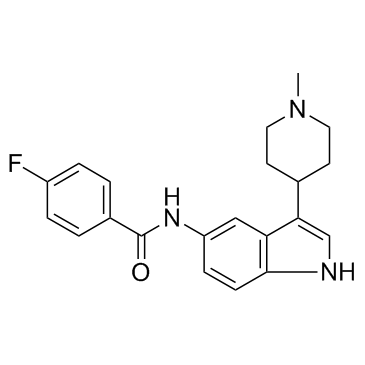
182563-08-2 |
| Literature: Schmidt, Axel M.; Eilbracht, Peter Journal of Organic Chemistry, 2005 , vol. 70, # 14 p. 5528 - 5535 |
|
~% 
182563-08-2 |
| Literature: Journal of Organic Chemistry, , vol. 70, # 14 p. 5528 - 5535 |
|
~% 
182563-08-2 |
| Literature: Journal of Organic Chemistry, , vol. 70, # 14 p. 5528 - 5535 |
|
~% 
182563-08-2 |
| Literature: Journal of Organic Chemistry, , vol. 70, # 14 p. 5528 - 5535 |
|
~% 
182563-08-2 |
| Literature: Journal of Organic Chemistry, , vol. 70, # 14 p. 5528 - 5535 |
| Precursor 7 | |
|---|---|
| DownStream 0 | |



